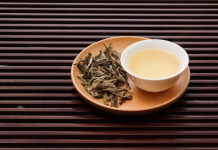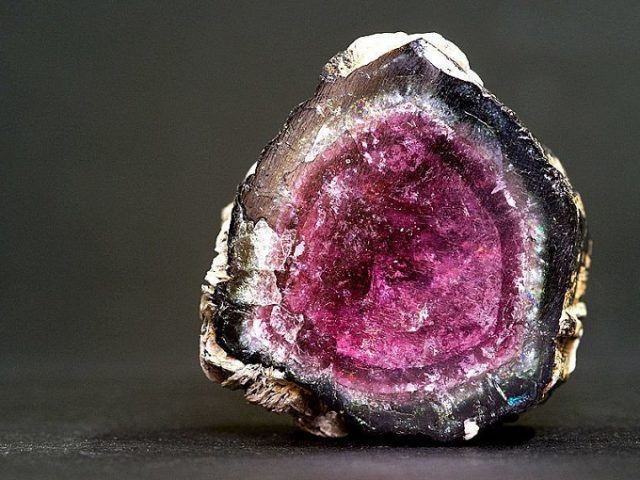The health benefits of rice for babies include good source of B complex vitamins, good source of high energy, useful protein in rice, easy to digest, rejuvenates the body when mixed with milk and is a cure for diarrhea and dysentery.
Rice is another staple food which is very popular in South Eastern Asia, particularly in countries like India, China, Sri Lanka, Indonesia, Bangladesh, Myanmar, Philippines, Malaysia, Thailand, Vietnam, North Korea, South Korea and Japan.

Cultivation of rice is believed to have first appeared in China about 8000 – 12000 years ago, according to one study by the Proceedings of the National Academy of Sciences, United States. Same study also says that rice has been one of the oldest cultivated crop species in the world. Rice is also one of the largest consumed agricultural crop in the world, only next to maize. This is perhaps because the population density is much higher in Asia than any other continent in the world, especially with two most populous countries in the world, China and India.
One of the reasons why rice is popular in South East Asia is due to the fact that unlike other crops, rice consumes huge amounts of water. Thanks to abundant water supply through various rivers, canals, lakes, monsoon rainfall, Asia is perhaps the perfect place for rice production. At present, some of the highest rice producing countries in the world are China, India, Indonesia, Bangladesh, Vietnam and Thailand.
Nutrition in rice
According to the National Nutrient Database from the Department of Agriculture, United States of America, the nutrition found in rice include
| Nutrition | Value per 100 g | Nutrition | Value per 100 g |
| Water | 13.29 g | Energy | 358 kcal |
| Protein | 6.5 g | Total Lipid | 0.52 g |
| Carbohydrates | 79.15 g | Fiber | 2.8 g |
| Calcium | 3 mg | Iron | 4.23 mg |
| Magnesium | 23 mg | Phosphorous | 95 mg |
| Potassium | 76 mg | Sodium | 1 mg |
| Zinc | 1.1 mg | Thiamin | 0.565 mg |
| Riboflavin | 0.048 mg | Niacin | 4.113 mg |
| Vitamin B-6 | 0.171 mg | Folate | 389 ug |
Is rice good for my baby? Or Can rice be given to my baby?
Rice is considered to a very low allergen food and it is ideal for babies to consume. 5-6 months is the ideal time to start solid or semi-solid foods for your baby. Rice can be given to babies who are as young as 5 months old.
Health benefits of rice for babies
Here are some of the benefits of rice for babies.
Good source of B complex vitamins: Whole rice or brown rice is a very good source of B complex vitamins. Each of these vitamins has an important role in the overall development of the baby including physical development and brain development.
Useful protein from rice: The proteins found in rice are very useful for muscle development. The amino acids found in rice help in rejuvenating muscles after stretching and contracting. Apart from muscles, the amino acids also help in building ligaments and tendons. (Bakhru, Foods That Heal).
High source of energy: Ounce to ounce, rice has more calories than many cereals. This makes it an ideal food with high amounts of energy suited for heavy physical work. If you want your toddlers or children to play all the day without ever getting tired, feeding them with rice is a good option.
Easy to digest: Rice, particularly white rice is very easy to digest. This is an advantage for infants as they cannot digest heavy food. Their digestive system has not evolved to such an extent that they can digest heavy and complex food. Instead, easily digestible and simple food is all time good for them. (Bakhru, Foods That Heal).
Is rejuvenating when mixed with milk: Boiled rice when mixed with milk is a rejuvenating and strength giving food that provides energy throughout the day. It is believed that certain amino acids in rice and milk get enhanced when mixed and work like a charm. In fact, in many oriental cultures, the first solid food for babies is boiled rice mixed with milk. (Bakhru, Foods That Heal).
Cure for diarrhea and dysentery: Boiled rice mixed with butter milk is also good for controlling diarrhea and dysentery. This mixture brings relief from diarrhea and dysentery in matter of few hours. (Bakhru, Foods That Heal).
Measures to be taken while giving rice to your babies
Here are some of the measures should be taken while giving rice to your babies.
Selecting good rice: Selecting good rice is an important step that ensures that you and your baby’s health. You can find three varieties of rice. Long, medium and short grained varieties. While long and medium are costlier, short grained rice comes at low cost, though the nutrients that each of the variety is more or less similar. You can opt for medium or small grained rice.
Preparing rice: Unlike wheat, corn or maize, where the flour is important, with rice, the standard procedures can vary. Before boiling the rice, be sure to rinse it and sometimes soaking it for an hour or so can make cooking easy. If you use a standard pressure cooker, then it’s easy to cook rice. Add 1½ times water to rice, if the rice is soaked. Otherwise, add 2 times the water, if rice is not soaked. When the rice is being prepared for babies, make sure that you boil for some more minutes, so that it almost turns into a paste.
Alternative method for preparing rice: Before you boil rice, dry roast rice for 5 minutes on low heat and then grind or pulverize it roughly to the consistency of baby food powder. This powder can be stored for 1-2 months. You could use this rice powder as the base ingredient of baby food. Boil this rice powder in sufficient amount of water for about 15 minutes, if you’re cooking directly. If you are cooking in rice cooker, then it’ll take as much time as regular rice.
Feeding rice: Take a small bowl full of the paste like rice. Add sterile water to the rice to make puree. You can add milk, provided you talk to your pediatrician about introducing cow’s milk into your baby’s diet. Do not add soymilk as it can further aggravate food borne allergies.
Check for allergies: Though rice is one of the least allergic cereals, there can be chances that your baby is allergic to rice. So, be on the lookout for allergic reactions that include vomiting, swelling of mouth, lips, tongue, dizziness, skin rashes, etc. if you notice any of these or all of these symptoms rush to your pediatrician immediately. For the first time, introduce the above mentioned boiled rice batter without any milk.
Introducing brown rice: Doctors say that brown rice is a much better option than white rice. But, you must consider one thing. Though brown rice is healthy and filled with vitamins and minerals, it also contains fibrous layers. These layers can be difficult for your baby to digest. So, wait until your baby is at least 3 – 4 years of age or older before introducing brown rice.












